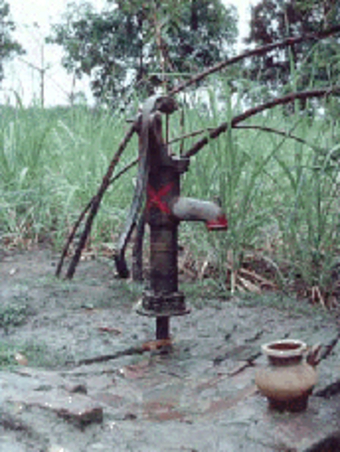Department Water Resources and Drinking Water
Mitigation of Groundwater-Derived Arsenic Hazards and Sustainable Water Supply System in Asian Countries
AGS - Alliance for Global Sustainability

Overview
Bangladesh is currently confronted with a water supply crisis of enormous proportions. About one third of the 130 million inhabitants depend on ground water with arsenic contents far above acceptable levels. Experts both in Bangladesh and the World Health Organization (WHO) suspect that nearly 20 million people are, to a greater or lesser extent, already suffering from arsenic poisoning. In addition to Bangladesh, West Bengal and Taiwan, many other regions in East Asia might be affected by arsenic contaminated groundwater.

As a part of national and international efforts to find solutions and to develop safe water supply systems in arsenic affected regions, AGS is funding a collaborative project between the three AGS Universities and the Bangladesh University of Engineering and Technology (BUET). The research groups in the different institutions work on three interrelated key issues to contribute to short term and long term solutions.
Health and sociocultural aspects of water use
The primary purpose of the work of the UT group is to describe the human toxicological and the public health aspects at the community level. Information about the prevalence of arsenic related health effects and the possible risk population is incorporated in designing and planning mitigation or counteracting measures.
Water treatment options for safe drinking water at the household level
A primary short term goal is the reduction of arsenic intake. To achieve this goal, we work on the evaluation and development of water treatment methods at the communal and household level (EAWAG, UT and BUET). The EAWAG group is working on the development of simple, socio-economically acceptable arsenic removal procedures that are adapted to the situation in rural villages.
More Background
In the early 1970's nearly one quarter of a million children died each year in Bangladesh and West Bengal from water-borne diseases.
In response, approximately four million tube-wells have been drilled to provide pathogen-free drinking water. These wells now supply over 90% of the population and have significantly reduced infant mortality.
Tragically, the same wells that saved many lives now pose the threat in what might be the largest mass poisoning in history. The groundwater is contaminated with naturally occurring arsenic from the alluvial and deltaic sediments that form the region's aquifers. 35% of the wells contain arsenic above the current standard of 50 ppb (the recommended WHO standard is 10 ppb), exposing one third of Bangladesh's 130 million people to drinking water with elevated levels of arsenic.
The final solution for this environmental hazard nececitates the combined efforts of international organization, national and local governments, communities, and people themselves. It is important that all relevant decisions are based on a sound disciplinary and transdisciplinary scientifc basis.

Links
Alliance for Global Sustainability
Massachusetts Institute of Technology
University of Tokyo
Swiss Federal Institute of Technology
Bangladesh University of Engeneering and Technology
West Bengal and Bangladesh arsenic crisis information Center
WHO
UNICEF
British Geological Survey
Havard University: Arsenic Project
Berkley University: Arsenic Project
United State Protection Agency
Wikipedia
Map
